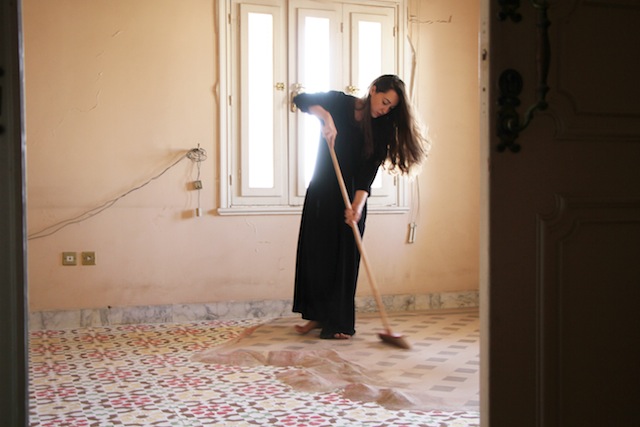Every year, in February, the fledgling Saudi arts scene has its moment. Once upon a time in this austere kingdom, the Jeddah Art Week (JAW) reigned supreme on the local artworld throne. The 2013 brainchild of Art Jameel, a cultural foundation under the auspices of the Saudi-based Abdul Latif Jameel group, JAW set about nurturing local artists and commandeering some noteworthy exhibitions, and ended up drawing attention to an overlooked pocket of Middle Eastern artistic output. But lo! In 2014 a royal rival appeared: 21,39 Jeddah Arts. Spearheaded by a band of self-described arts enthusiasts under the nonprofit banner of the Saudi Arts Council (chaired by the formidable Princess Jawaher Al-Saud), the hefty multi-month cavalcade of guest-curated shows, talks and workshops overtook the vanquished JAW, which vanished from the kingdom forever.
While previous iterations of 21,39 have tried to give some sense of history to the development of Saudi arts – the inaugural Past is Prologue, in 2014; 2015’s Fast Forward; and last year’s Earth and Ever After – the current edition seems, oddly enough, to reengage with the ousted JAW’s initial remit of encouraging local talent.
Ubiquitous artworld duo Sam Bardaouil and Till Fellrath took 16 emerging Saudi-based artists under their curatorial wings for the three-part show Safar. A layered Arabic word meaning travel or journey, with connotations of discovery and unveiling, Safar evokes a life of wandering and learning. And wander they did. Bardaouil and Fellrath took their charges on study trips to Gwangju and Berlin in the dialogue-laden year leading up to the reveal of the commissions.
Somewhat expectedly, these practices are not at equal states of maturity. But the levelling touch seems to be the curators’ sense of narrative coherence and exhibition standards. Themes of dystopia, abandon and a fragile sense of temporality emerge in many of the Safar commissions, mostly installations unfolding across a segment of the show titled ‘The Mall’, a succession of rooms tucked away in the corner of a mall. Jeddah-based architect Nasser Al-Salem’s They Flaunt their Buildings (2017) is a stark, imposing cement brick monument, the top of which, when viewed in a ceiling-hung mirror, reveals a cautionary saying on reckless prosperity. An architectural echo of Jeddah’s disintegrating historic downtown comes from Zahra Al-Ghamdi’s The Labyrinth and Time (2017), a wall-bound, warrenlike sculptural work shaped from cotton, sand and water.
Palestinian-Saudi artist Dana Awartani links the acts of creation and destruction in her mixed-media installation I went away and forgot you. A while ago I remembered. I remembered I’d forgotten you. I was dreaming. (2017). On the ground is a painstakingly reconstructed mosaic-tiled floor (based on a pattern from the dilapidated Al-Balad neighbourhood) made of hand-pigmented sand. A nearby video shows the artist sweeping the labour-intensive patterns into a forlorn heap – another critical gesture foregrounding the yearning to preserve, a desire shared by several of the young artists in Safar.

Part two of the show, called ‘The Home’, takes us to Al-Balad itself, where Abdullah Al-Othman’s Suspended (2017) drives the act of preservation literally home. The artist has wrapped a nineteenth-century women’s shelter, Christo-like, in aluminium foil. The tensions in the work – history/industry, visibility/neglect, destruction/safeguarding – underpinned by the slow peeling away of the once regal building’s new skin, make it easily the most emblematic of this year’s 21,39.
Further afield, in the King Abdullah Economic City, the exhibition’s third chapter, ‘The City’, stretches the Safar conceit a bit thin. Eight older videoworks by blockbuster artists, including Douglas Gordon’s well-known Play Dead, Real Time (2003) and Anri Sala’s 1395 Days without Red (2011), are separated from the intriguing, youthful work by an inexplicable gulf. But, after all, this is a royal kingdom; some fanfare is expected.
First published in the Summer 2017 issue of ArtReview
